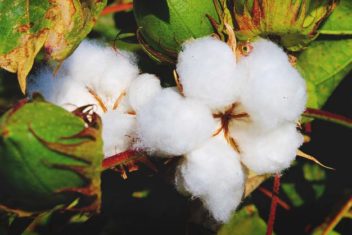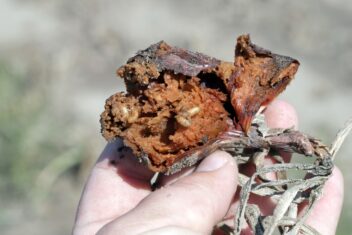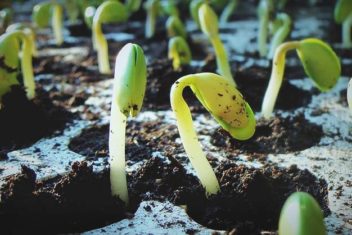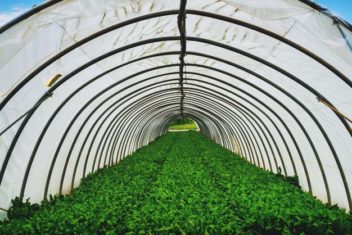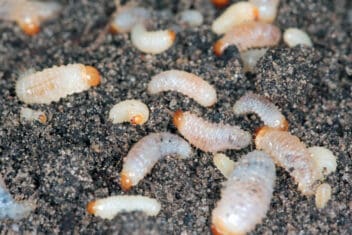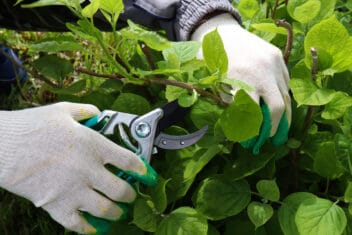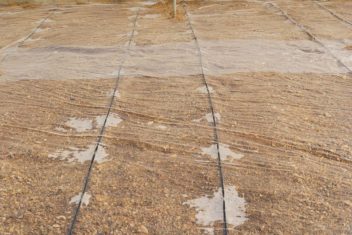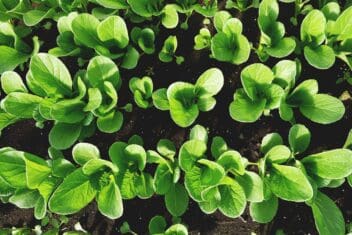Many countries around the world have started banning the use of plastic grocery bags. Some cities and states in the US are also either already doing it or considering doing it.
We all know plastic bags are a serious environmental problem. So, this seems like a great idea in theory. Unfortunately, in some places, banning plastic bags actually leads to even greater plastic use and other related ecological problems. Want to know why?
It turns out, dog owners who pick up their dog’s poop (rather than leaving it for others to step in) rely on those flimsy grocery store bags. When those bags are no longer allowed, responsible dog owners buy plastic bags to use for poop pick up.
The bags they buy are much better quality and usually come packaged in things that have other unseen environmental consequences. The net result is that expensive plastic bag sellers win big, and the environment and landfills still lose.
I promise I am not making this up! It was even all over the news for a while.
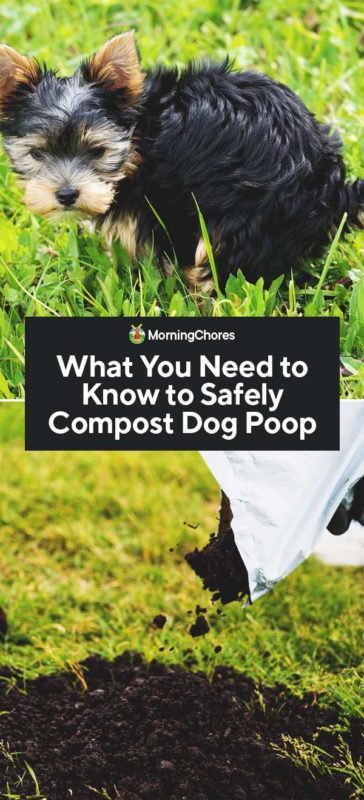
Why You Should Compost Dog Poop

Now, while I commend all those thoughtful dog owners who try not to leave messes for the rest of us to step in, there’s an even better alternative to using plastic bags for dog poop!
Don’t dispose of it. Compost it!
Ewww! Did she really just say she wants me to compost my dog’s poop? Yep, you read that right. Composting dog poop is a far saner way of dealing with that waste and gives you a good product to use in the garden.
Some parks, like in New York State, are already doing this as a matter of course. Then, they are applying all the compost generated to the beautiful garden plants that all the park visitors enjoy seeing.
From a homesteader’s view, it is not too far removed from horse manure and chicken manure – already being used for composting.
Dog Poop vs. Compost
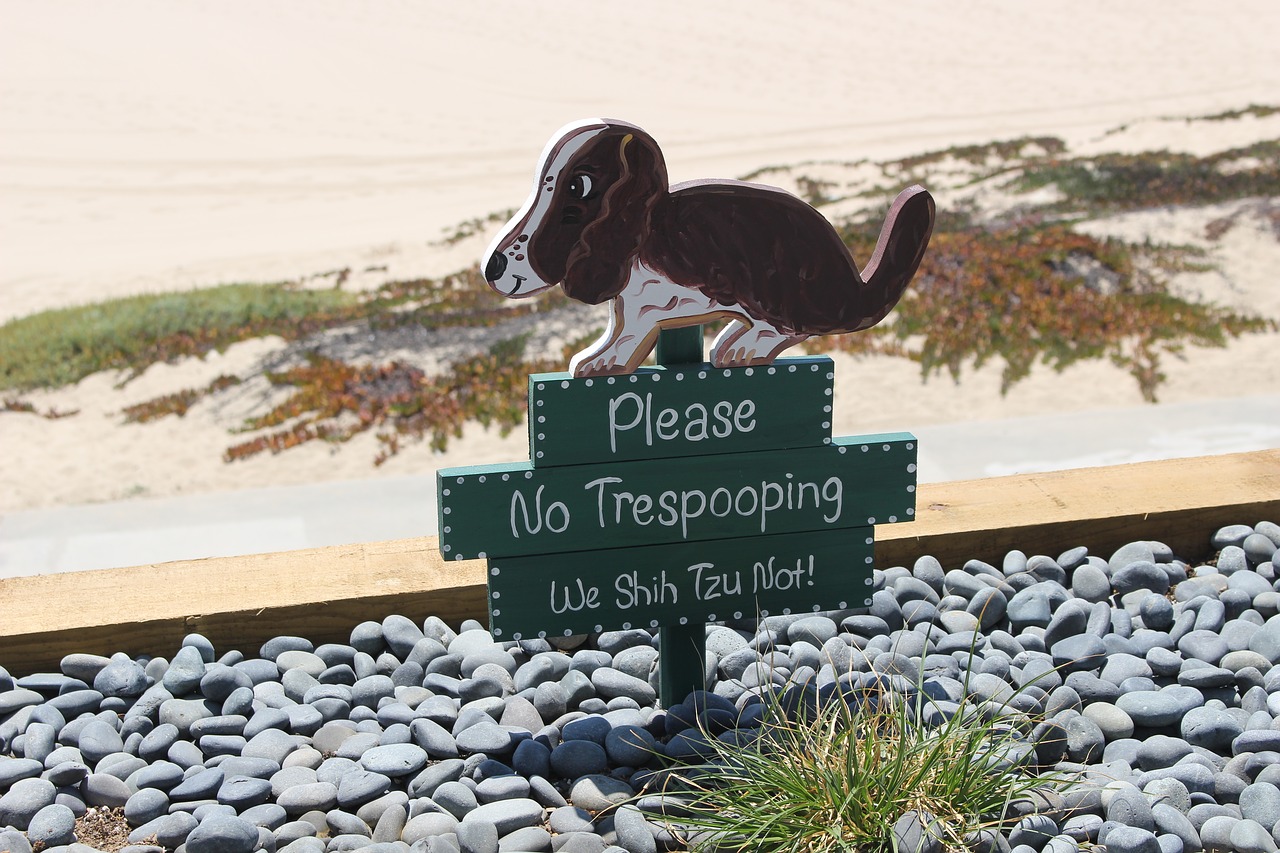
I know we’ve all been told that poop is scary stuff. Dogs eat all sorts of nasty things like poop from other animals, half-rotted dead things, and other possibly infectious unspeakables. As a result, they can play host to parasites and bacteria which might be spread through their poop.
Honestly, some of what could be transmitted in dog poop could be problematic for humans as well. So, before I tell you how to compost dog poop safely, I want to share some of the risks lurking in dog poop so you can make informed decisions about how to manage their waste.
Pathogenic Risks in Dog Poop
The pathogenic risks from dog poop generally fall into two categories – parasites and bacteria. Parasites are the easier of the two to unravel and mitigate risk for. So, we’ll start there.
1. Parasites
The most common kinds of parasites in dog poop we should worry about requires a living, breathing host such as a dog or a human being to exist. If the pathogens are removed from the host, they eventually starve and die.
As a result, the easiest way to make compost dog poop safely is to age it long enough for the larvae of parasites die. To do that, you need to know which parasites you might have and how long it takes to kill them.
– Roundworms
Roundworms (Toxocara Canis) are the universal risk when it comes to handling and using dog poop for compost. This risk is the greatest because just about every dog, every place in the world, will have roundworms at some point in their lives.
Luckily, roundworm larvae can only exist in feces, without a host, for a few months. Although it’s hard to find an exact number for how long roundworm larvae can live in dog poop, most estimates suggest six months as a maximum number. Most likely though, roundworm larva dies much faster.
– Hookworms
Hookworms are often cited as a concern for composting dog feces. However, according to the CDC, their larva can only survive for 3-4 weeks in fecal matter, under ideal conditions. So, they are even easier to dispose of than roundworms.
– Tapeworms
Echinococcus granulosus is another parasite that is sometimes transmitted through dog feces. The basic lifecycle is that dogs eat the organs of animals that have cysts caused by tapeworms. Then the dogs poop and deposit the eggs of the tapeworm in soil that humans might touch. (Or, dogs have traces of feces in their fur and the eggs get transmitted when you pet your dogs.)
This parasite most commonly occurs in people like sheep farmers who feed their working dogs’ offal. It’s prevalent in Africa, Europe, Asia, the Middle East, and Central and South America. There have only been a limited number of cases reported in the US or Canada.
The eggs from echinococcus can survive in feces for as long as one year. In areas where this particular parasite occurs or if you might be at higher risk (e.g. you feed your dogs offal), aging compost that contains dog manure for at least a year is advisable.
2. Bacteria
In addition to parasites, there are also some bacterial risks associated with dog poop. Bacteria are everywhere, of course. So you’ll never be able to get away from them! But, there are a few specific pathogenic bacteria that can wreak havoc on human health and may sometimes be found in dog feces.
Quite frankly, you are already at risk for infection from all the bacteria I am about to tell you about just by having a dog. You are even at risk if you don’t have a dog simply because you eat meat, eat vegetables, garden, or go to the hospital because many of these have become ubiquitous in our environments.
General risks aside, people with compromised or immature immune systems such as anyone who is ill, pregnant, elderly, or very young, are at greater risk for illness from contact with these bacteria. At-risk individuals should not be involved in the collecting or composting process of any kind of feces.
If you are a healthy, conscientious, homesteading adult, then composting dog manure should not raise your health risks related to these bacteria if you do it right. Still, it’s worth understanding the risks so you can make careful decisions about composting.
– Campylobacter
Campylobacter is a bacteria that is most commonly associated with raw poultry. Tests have shown that 33% of the chicken bought from retailers like grocery stores have this bacteria. However, some sources suggest it may also be transmissible through contact with dog feces.
Symptoms of infection include diarrhea (often bloody), fever, abdominal cramps, and possibly nausea and vomiting. In some individuals with weakened immune systems and in rare cases, infection with this bacteria may be lethal.
To date, researchers attempting to identify this bacteria in dog feces have been unable to do so. Some researchers believe that even when a dog is a carrier of the bacteria and sheds it in their feces, this particular bacteria may simply not be viable very long outside the host.
The greatest potential risk is if fresh feces makes contact with a carcass and someone eats that carcass without cooking it properly first. As such, keeping your compost area well away from your slaughter area is important. Also, composting dog feces separate from slaughter wastes might help mitigate risks from the bacteria finding an interim host and extending its survival time.
The risk for salmonella and yersinia bacteria can also be mitigated by taking these same basic precautions.
– Giardia
Giardia is a bacteria that can cause illness in humans and animals. Diarrhea is the most common symptom. However, it can result in malabsorption of minerals and cause developmental health problems.
Most people who hike know not to drink untreated water in nature because animals like deer frequently have giardia and transmit it to water sources. But it can also cause problems in dogs, other pets, and livestock.
Luckily, giardia risks in manure, dog or otherwise, can be mitigated simply by aging manure for 90 days.
– Enterococcus faecium
Ampicillin-Resistant Enterococcus faecium, often called AREF or hospital Enterococci have also been found in dog feces. Enterococci are a family of bacteria that are particularly difficult to avoid because they are able to survive in highly variable environments. They can live for a long time in humans, animals, plants, soil, water, and more.
This hospital bug can be found in just about every kind of manure, including livestock, dogs, humans, and more. They are also often found in fermented foods, dairy, meat, and cheese. Similar to coliform bacteria, very high quantities of various strains of enterococci are often used as an early indicator of a water quality problem.
Testing has also shown that enterococci can even survive (though not necessarily thrive) in sterilized sewage, such as the Class A and B biosolids from sewage plants that are legally allowed to be used to add soil fertility for food production. Overall, bacteria from this family are particularly well-suited to surviving a wide range of environments for extended periods, including in compost.
The existence of enterococci themselves is not so much the issue. It’s the increasing prevalence of treatment-resistant varieties of these enterococci, like E. faecium or AREF that cause human illness. The mysteries that surround how quickly these strains have managed to penetrate environments outside hospitals and make their way into dog and livestock feces, is becoming a big cause for concern.
Frankly, at this point, there are no particular guidelines or recommendations for how to mitigate the risk of having these bacteria in your compost. Hot composting and long aging might possibly reduce the activity levels of this bacteria.
Truthfully though, scientists and lawmakers don’t know enough yet about how to mitigate risks for these bacteria. So at this point, using the standard composting procedures I’ll detail momentarily are still considered safe guidelines.
– MRSA
You’ve all heard of MRSA, right? It’s bacteria called Staphylococcus aureus that is usually caught at hospitals. Generally what happens is humans go to hospitals and bring MRSA home to their pets. Pets can then share MRSA with humans through their wet parts such as their nose and anus areas.
It is believed that MRSA usually runs its course in animals within a few weeks and usually does not make them sick. So, pets like dogs are not really considered a major point of transmission for MRSA in general. However, if you or your pet has had contact with hospitals, its probably advisable to wait a month or so before resuming your dog (or humanure) composting to mitigate MRSA risks.
In farms with high-densities of livestock such as commercial pig farms, or regions with lots of cattle feedlots, MRSA infections are far more common in general. So, if you live on or near these kinds of operations cross-contamination risks are higher. Pasteurizing compost is often mentioned as a good idea when you compost dog poop that is likely to have a higher risk of carrying treatment-resistant bacteria like MRSA.
Steps to Take to Mitigate Risks
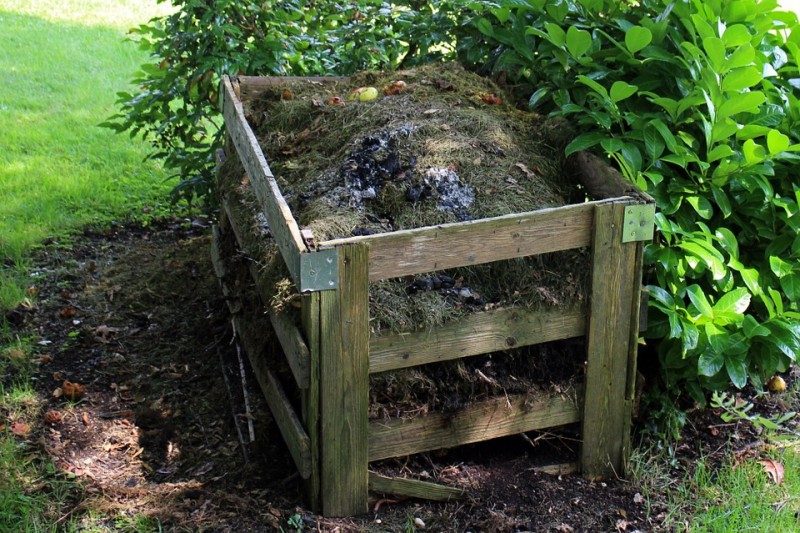
I am sure your head is spinning from all the risks lurking in manure – dog and otherwise. Luckily, understanding the risks can make composting in general and composting with dog poop much safer.
Here are some important safety steps to take while composting dog manure.
1. Choose a Safe Composting Area
Regardless of whether you compost dog poop or not, it should go without saying that any compost location should be well away from where children play. It should also be a safe distance from your house and your water supply or septic field (or your neighbors’).
Unfortunately, I’ve seen enough examples on the internet of people putting compost piles along their fence lines and polluting their neighbor’s yards to know it actually does need to be said. So here goes…
Please, please be mindful of everyone’s safety when selecting your compost area.
2. Plan to Age Your Compost
Except for enterococci, aging compost for at least one year is your best defense against potential risks. When you set up your compost area, leave room to let your finished and covered piles rest for a year before applying them to your garden.
3. Exercise an Abundance of Caution
Take a break from composting when you’ve got increased risks such as after hospital visits or if you are treating dogs for parasites.
Also, consider taking extra precautions if you live in high-risk environments such as right next to a commercial livestock feedlot. Leave higher risk, compost-related chores such as building or turning un-aged compost piles to healthy adults with fully-functioning immune systems.
Of course, always use good hygiene like hand-washing after handling feces or other compost materials.
4. Use Good Composting Techniques
The one thing I haven’t addressed yet in this post is how to compost dog poop. That’s because you can compost it exactly the same way you would compost any other manure source.
– Build it Right
In other words, you’ll want to collect enough browns and greens to make a 4 x 4-foot pile. Water the pile as you build it to ensure all the layers are sufficiently moistened to about a 60% moisture level all the way through.
You can also add all your other browns and greens to this pile for better-balanced compost. Just make sure your carbon to nitrogen ratio (C:N) is between 20 to 40 C to 1 N. Check out our compost calculator for details.
Protect your pile from wind and rain to make sure it doesn’t dry out or become soggy during composting. Also, make sure to maintain good airflow so that your pile does not turn anaerobic.
– Heat, Turn, Repeat, and Age
Generally, your pile will heat up for about two weeks, then begin to decline in temperature. Using a compost thermometer, make sure your pile gets to between 135-160°F.
When the temperature of the pile begins to decline, turn the pile. Make sure the outside edges of the pile contents end up on the inside after turning.
The pile should heat up again. Turn it when it starts to cool and repeat the process until the pile no longer heats up. Then begin the 1-year aging process before use. Remember to mark the date in your homesteading journal
– Tips on Storing Uncomposted Dog Poop
Note: To avoid the “gag factor” when storing dog pop, the USDA guide to Composting Dog Wastes recommends mixing two parts dog manure to one part sawdust or another carbon source such as chopped straw or hay, shredded newspaper, dog bedding, or fallen leaves as you collect it.
Store your dog manure and carbon source mix in a dry location until you are ready to build your compost pile. As long as this mix is kept dry, it should not actively compost much. Then, when you have enough materials to create a hot compost pile, you can begin composting.
Not Ready to Compost Dog Poop?
Composting dog poop may not be for everyone. So, if you just aren’t quite up for the task, and still want to save the world from plastic bags, then consider the following alternative.
Use a cat litter scoop and plastic storage container (e.g., quart-sized yogurt or sour cream containers) lined with toilet paper for easy collection. Then, flush your dog poop with your other wastes. This method also saves the planet a plastic bag or ten and requires very few extra resources if you add the dog poop while you are doing your own business.



